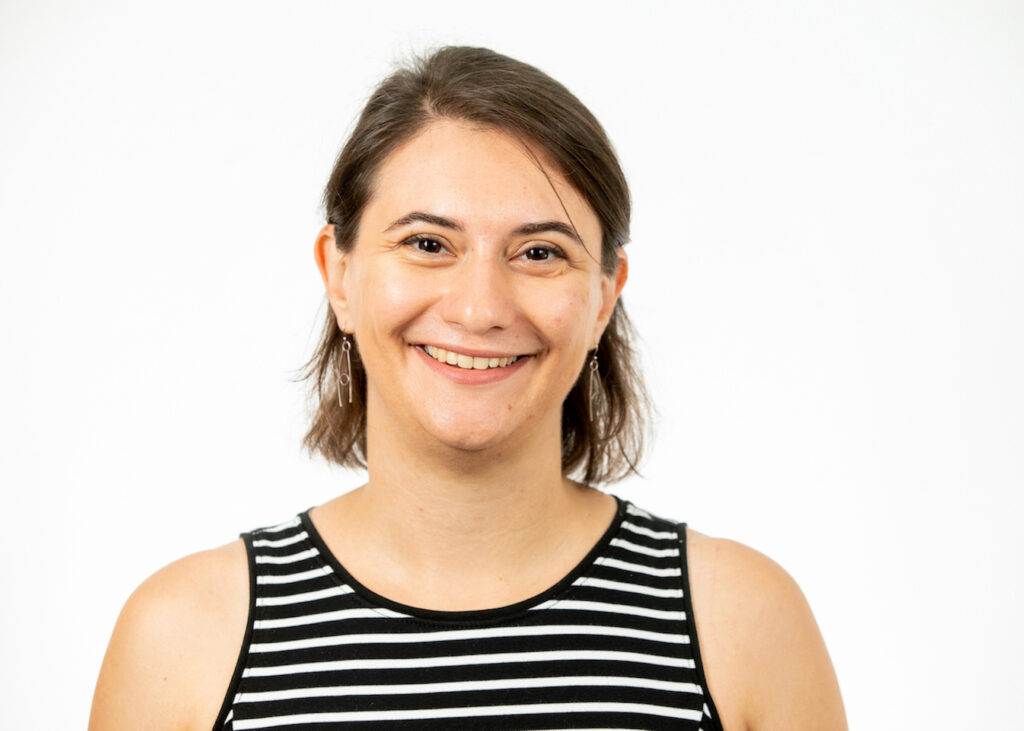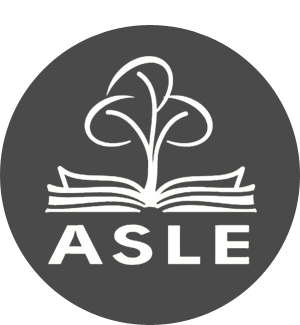ASLE’s Scholar of the Month for December 2022 is Sophia Bamert.
 Sophia Bamert is a Doctoral Lecturer in Composition in the English Department at Brooklyn College—CUNY. She previously was a Postdoctoral Fellow and Lecturer in the Engagements Core Curriculum at the University of Virginia, and she earned her PhD in English at the University of California, Davis, where her dissertation was titled “Plotting Race: Narrative Form and Urban Racial Geographies.” She recently published a reflection on the concept of “plotting race” in the journal Literary Geographies.
Sophia Bamert is a Doctoral Lecturer in Composition in the English Department at Brooklyn College—CUNY. She previously was a Postdoctoral Fellow and Lecturer in the Engagements Core Curriculum at the University of Virginia, and she earned her PhD in English at the University of California, Davis, where her dissertation was titled “Plotting Race: Narrative Form and Urban Racial Geographies.” She recently published a reflection on the concept of “plotting race” in the journal Literary Geographies.
How did you become interested in studying ecocriticism and/or the environmental humanities?
My interest in the environmental humanities goes back to a time before I’d ever heard the term. In high school, I was very interested in environmental issues and dreamt of being an environmental journalist. That led me to Oberlin College, which I applied to knowing that I wanted to be an Environmental Studies major. I was particularly drawn to the interdisciplinarity of Oberlin’s program, because I couldn’t decide whether to go in a humanities, social science, or natural science direction. I loved literature and English class, though, so I soon decided to add on an English major, not realizing where that would ultimately take me. When I needed to choose a “pathway” for my Environmental Studies major, I started Googling terms like “environmental literature,” and that was how I discovered ecocriticism (and ASLE)! By my junior year, a couple other double-major friends and I designed an ecocriticism private reading for ourselves – aided by resources that we found on the ASLE website and supervised by my wonderful advisor, T.S. McMillin – another pivotal moment in my environmental humanities journey. We chose Ursula Heise’s Sense of Place, Sense of Planet as a central text for the course. Having grown up in New York City, I had long been interested in understanding the urban environment and especially in piecing together how I, a city girl through and through, could care so much about the environment without being all that outdoorsy, and Heise’s monograph really spoke to the questions that were driving me.
I have to, of course, mention another ASLE-related moment that led me into academia: the summer after my junior year of college, my Environmental Studies professor, Jay Fiskio, gave me and a couple classmates the life-changing opportunity to attend and present at the 2012 ASLE Off-Year Symposium in Juneau, Alaska. Not only did we have a thrilling ferry trip up the Alaska Marine Highway along with other Southeast Alaska adventures, but the conference itself also totally inspired and excited me. I knew that I wanted to stay part of those conversations. No wonder I applied to PhD programs the following year! It’s wild to look back on what an integral role ASLE played in shaping my career from so early on.
Who is your favorite environmental artist, writer, or filmmaker? Or what is your favorite environmental text? Why?
The environmental text that I consistently return to is Jenny Price’s “13 Ways of Seeing Nature in LA.” In that essay she addresses the relationships between nature, cities, justice, and narrative that have long animated my research, and I love returning to the essay to reconnect with and reconsider my worldview as a scholar. I agree with her that cities are the best place to look if we want to understand and redefine our cultural conceptions of nature – and that a necessary core component of that urban project is taking an environmental justice approach. I also love teaching this essay because of how clearly it breaks down the nature/culture divide as a social construct and demonstrates the centrality – and power – of narrative in environmental studies.
What are you currently working on?
I am currently preparing to teach a research writing course themed around “urban environments,” and I am very excited to develop a syllabus that brings together texts about both racial geographies and urban nature. For me, to talk about the uneven racial geography of a place is to talk about its environment, as recent studies on the intersections of redlining and climate change make clear. I’m looking forward to seeing the variety of research projects that my students come up with and especially to teaching a course like this in a major city to an urban student body for the first time.
Over the past couple years, I’ve also been diving into the world of infrastructure studies and am very excited about its overlaps with both the environmental humanities and critical race studies. At UVA, I taught a course called the Aesthetics of Infrastructure, and I had such a great time learning with and from my students as we looked at the ways infrastructure appears in media ranging from speculative fiction to the visual arts to music.
What is something you are reading right now (environmental humanities-related or otherwise) that inspires you, either personally or professionally? Comment briefly on why or how it inspires you.
Earlier this year I read Jocelyn Nicole Johnson’s My Monticello. I couldn’t put it down, and as soon as I finished it I started telling everyone I knew to read it. (So now I’m telling you!) Environmental humanists should be especially interested in how the titular novella thinks about U.S. racial violence in the context of climate crisis, and vice versa.
Is there a scholar in the field who inspires you? Why?
There are so many, but I’ll take advantage of the opportunity to name scholars I’ve had the pleasure of learning from and being an interlocutor with. In addition to my earliest environmental humanities inspirations, T.S. McMillin and Jay Fiskio, my dissertation advisor Hsuan Hsu has had a huge influence on me and my work. If you haven’t yet read his latest monograph, The Smell of Risk, you owe it to yourself to do so. It’ll change the way you think about olfaction (and I bet many of you haven’t thought about it all that much before!). I count myself lucky to have done my PhD in the UC Davis English department, where there’s a vibrant environmental humanities conversation happening among faculty and grad students. My friends, colleagues, and professors there inspired me through their wide-ranging application of environmental humanities perspectives across periods, locations, genres, and media.
